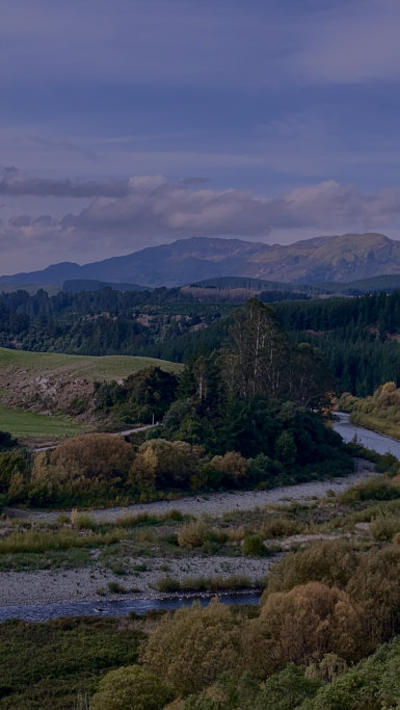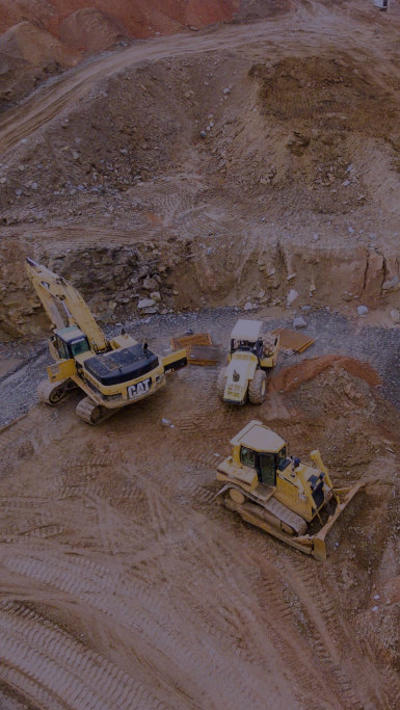Speak to our experts
Contents
Ground Cover is a regular publication tracking legislative and regulatory reform in resource management, climate change and local government law.
2021 will be a huge year in each of these areas, including the replacement of the Resource Management Act, the preparation of the Government’s Emissions Reduction Plan setting out how New Zealand’s first three emissions budgets will be achieved, and progress on the Government’s Three Waters Programme.
Our national Environmental, Planning and Resource Management team offers market leading expertise and a seamless service for all your commercial projects, land use, infrastructure development and consenting needs.
Contents
Resource Management
Climate Change
Local Government
Complex process planned for RMA reform
The Government has adopted the broad approach recommended by the Randerson Panel to replace the Resource Management Act (RMA) but anticipates departing from the Panel’s advice in some areas.
As signalled, three Acts will be developed:
- a National and Built Environments Act (NBEA) which Environment Minister David Parker sees as “the core piece of legislation replacing the RMA”
- a Strategic Planning Act (SPA) which will integrate functions under the RMA, the Local Government Act 2002, the Land Transport Management Act 2003 and the Climate Change Response Act 2002 to enable clearer and more efficient decision-making and investment, and
- a Climate Change Adaptation Act to address issues around managed retreat and financing adaptation.
Parker hopes to introduce both the NBEA and the SPA into Parliament before the end of this year, and to have them passed by the end of 2022.
MfE sets cracking pace
The Ministry for the Environment’s Briefing to the Incoming Minister (BIM) sets out a challenging list for “early decisions” if the Government’s objectives are to be achieved and environmental outcomes are to be improved. This includes:
- the scope and timing of the RMA reform
- an approach to water allocation, including addressing Māori rights and interests as a priority
- the direction of New Zealand’s climate adaptation and mitigation response, and
- the next steps for the waste levy expansion and the phase-out of hard-to-recycle plastics.
To learn more, read the BIM.

Quick returns on fast track consent process
The Matawii water storage reservoir in Kaitaia was signed off on 23 October 2020, becoming the first project to be consented under the new fast track process.
In addition to the projects listed in the legislation, a further 11 (as at 4 February) had been referred by Parker for the fast track treatment. They cut across a range of sectors from residential and retirement developments to commercial and industrial.
They will now go to an expert panel for consideration with decisions expected early in 2021.
To learn more, read the statement or MfE information.
Freshwater package under pressure
The Prime Minister took the opportunity of her first speech post-election to a primary industries audience to reassure farmers that the Government will give their concerns about the Government’s freshwater reforms a sympathetic hearing:
As we get further into implementation of this package, if some aspects are found to be impractical on the ground, or unclear, Ministers will receive that advice with a view to making the regulations workable. That’s in everyone’s best interests.
Many, but particularly quarry operators and other major industrial parties, are unhappy about a late change to the definition of “natural wetland” in the National Policy Statement (NPS) for Freshwater Management, which they consider is too broad and will stymie development.
The Cabinet agreed in the last term to “adjustments” to soften the rules around winter grazing after a backlash from Southland and Otago dairy farmers, and National campaigned on a promise to repeal or review nine of the most hotly contested regulations affecting agriculture.
These cover: winter grazing, Mandatory Freshwater Farm Plans, stricter stock exclusion and fencing of waterways, removal of stock from natural wetlands, nitrate toxicity levels, intensification limits, a cap on nitrogen fertiliser use, and electronic measuring and reporting of water usage.
Read the PM’s speech or see more information here.
Can the EEZ Act allow seabed mining?
A question highlighted by the Trans-Tasman Resources Limited (TTR) case before the Supreme Court is whether it is possible for any form of seabed mining to be allowed under the Exclusive Economic Zone and Continental Shelf (Environmental Effects) Act 2012 (EEZ Act).
TTR was granted approval on 3 August 2017 by the Environmental Protection Authority Decision-making Committee (DMC), on the casting vote of the Chair, to mine iron sands off the coast of the Taranaki Bight, processing up to 50m tonnes of seabed a year.
Of three such applications to go before the DMC so far, this is the only one to make it through and the DMC attached 109 conditions to the consent – one of which was that a two year study be conducted before operations commenced to measure the environmental effects.

If ongoing monitoring showed sediment limits were exceeded, the business would be called to a halt.
But TTR has yet to exercise its permit because it has been subject to continuous litigation, first in the High Court, then in the Court of Appeal and now in the Supreme Court.
And the DMC’s authority to grant seabed mining consents is now in the balance due principally to the interpretation of the EEZ Act offered by the Court of Appeal in its judgment of 3 April 2020.
Key among its findings were that:
- section 10 defining the purpose of the Act as to promote the sustainable management of the EEZ and “to protect the environment from pollution by regulating or prohibiting the discharge of harmful substances and the dumping or incineration of waste and other matter” is a bottom line – preventing activities being consented when there is a real prospect of pollution, and
- the scheme of the Act does not allow for environmental harms to be traded off against economic benefits or permitted on the basis that they could be subsequently remedied or mitigated. This was why the Act specifically disallowed the option of an adaptive management approach.
The effect of the High Court and the Court of Appeal judgments was to quash the existing consent and to return the application to the DMC for reconsideration. The Supreme Court hearing has been completed. Its decision will have implications well beyond TTR.
To learn more, read the Court of Appeal decision.

New rules for the outdoor storage of tyres
Cabinet has approved the preparation of a National Environmental Standard (NES) to control the storage of tyres outdoors. Expectations are that the process will be completed and the NES in effect next year.
To learn more, read the statement.
Amendments to hazardous substances regime
The Environmental Protection Authority (EPA) has released a cabinet paper outlining proposed amendments to the Hazardous Substances and New Organisms Act 1996. The aim is to allow the EPA to more quickly assess and reassess chemicals for use in New Zealand.
Read the cabinet paper.
No wriggle room in Climate Change Commission report
The Climate Change Commission’s draft advice for the first three emissions budgets provides little room for equivocation.
It says with the right carbon price and other incentives in place, New Zealand can achieve the 2050 zero carbon target using available technologies at an overall cost to the economy of less than 1% of projected Gross Domestic Product.
Public consultation closes on 14 March. The Commission will present its final report to Government by 31 May 2021. The Government can choose not to adopt Commission recommendations.
To learn more, read our commentary.
MfE takes climate change reporting up a notch
The Ministry for the Environment is asking organisations with reporting obligations under the Zero Carbon Amendment Act to provide information on their climate change risks. These include public and private-sector entities providing fuel, electricity, water, transport, and telecommunications infrastructure, local authorities, Crown entities, state-owned enterprises, the Police and the Defence Force.

The number affected may be around 600. While the scope of possible requests under the Act is very broad, the initial focus is on high-level information regarding governance concerning levels of preparedness for, and adaptation to, physical climate change risks.
The resulting reports are not published and will have statutory disclosure protections. This reporting obligation is separate to the Government’s proposed mandatory climate-related financial disclosures regime (which is expected to be legislated for next year and to come into force for Financial Years 2022/2023.
Read the MfE announcement.
Fund to assist shift to clean fuel
The Government has created a $70m fund to assist businesses to switch from fossil fuels to clean energy alternatives.
To learn more, read the statement.
Mahuta removes block to Māori wards
Māori representation at local government level will increase as a result of Minister Nanaia Mahuta’s decision to disallow binding referendums on the creation of Māori wards.
Currently a referendum must be held at the petition of 5% of the local constituency. This has often frustrated council attempts to ensure Māori are appropriately represented in decision-making. Since 2002, 24 councils have attempted to establish a Māori ward and only two have succeeded.
Referenda may still be held but their results will not be binding.
The change will create a level playfield between Māori and general wards and will be applied through transitional arrangements to the 2022 local elections pending the passage of the final legislation.
Read the statement and legislation.

Auckland Council under legal action threat over climate change
Lawyers for Climate Action have warned Auckland Council that failure to deliver on its climate change response promises may result in a legal challenge. The Council has promised to halve emissions by 2030 and to be carbon neutral by 2050.
To learn more, read the article.
District Council ordered to re-think climate emergency decision
The High Court has quashed the Thames-Coromandel District Council’s decision not to sign the Local Government Leaders’ Climate Change Declaration and ordered it to reconsider.
Palmer J said that the Council’s action had not been unreasonable because it was possible that the Declaration could create “a legally enforceable legitimate expectation in some circumstances”. But in deciding not to approve the signing of the declaration on the basis it did, without doing the analysis or consulting the public, was inconsistent with the requirements of the Local Government Act.
The Council accepted that Thames-Coromandel was likely to be materially affected by climate change. The Council estimated the replacement value of affected core infrastructure ranged from $63m to $500m, depending on whether the sea level rose half a metre or three metres. And information on the Council’s website indicated that it had a higher than average proportion of people vulnerable to climate risk – the elderly, the poor, and Māori.
The Declaration now has 67 signatories, of some 97 councils and territorial authorities.
Read the judgment.

Congestion charging for Auckland
A report commissioned by Treasury, the Ministry of Transport, Auckland Council and Waka Kotahi NZ Transport Agency is recommending a congestion charge of $2.30 a trip within the Auckland isthmus ($3.50 at peak times), or 12c a kilometre on the main traffic corridors.
The work programme was initiated by Simon Bridges as then Minister of Transport in 2016 and the Government is planning to progress it through a select committee inquiry to maximise the chances of getting a cross-party consensus.
Estimates on the economic costs of Auckland’s congested transport network vary, but one estimate puts it at $1.2b a year.
Read the report.
The rising cost of rising seas
At least 10,000 properties across Auckland, Wellington, Christchurch and Dunedin will become uninsurable by 2050 because of climate risk, according to Climate Sigma in research commissioned by the Ministry of Business, Innovation and Employment (MBIE).
The report is based on a conservative analysis. The authors say they:
expect the true number of homes facing coastal insurance retreat to be higher, and the number on our inland flood plains to be far higher.
To learn more, read the report.
Speak to our experts
 Catherine Somerville-Frost, Partner
Catherine Somerville-Frost, Partner
 Paula Brosnahan, Partner
Paula Brosnahan, Partner
 Ben Williams, Partner
Ben Williams, Partner

































































































